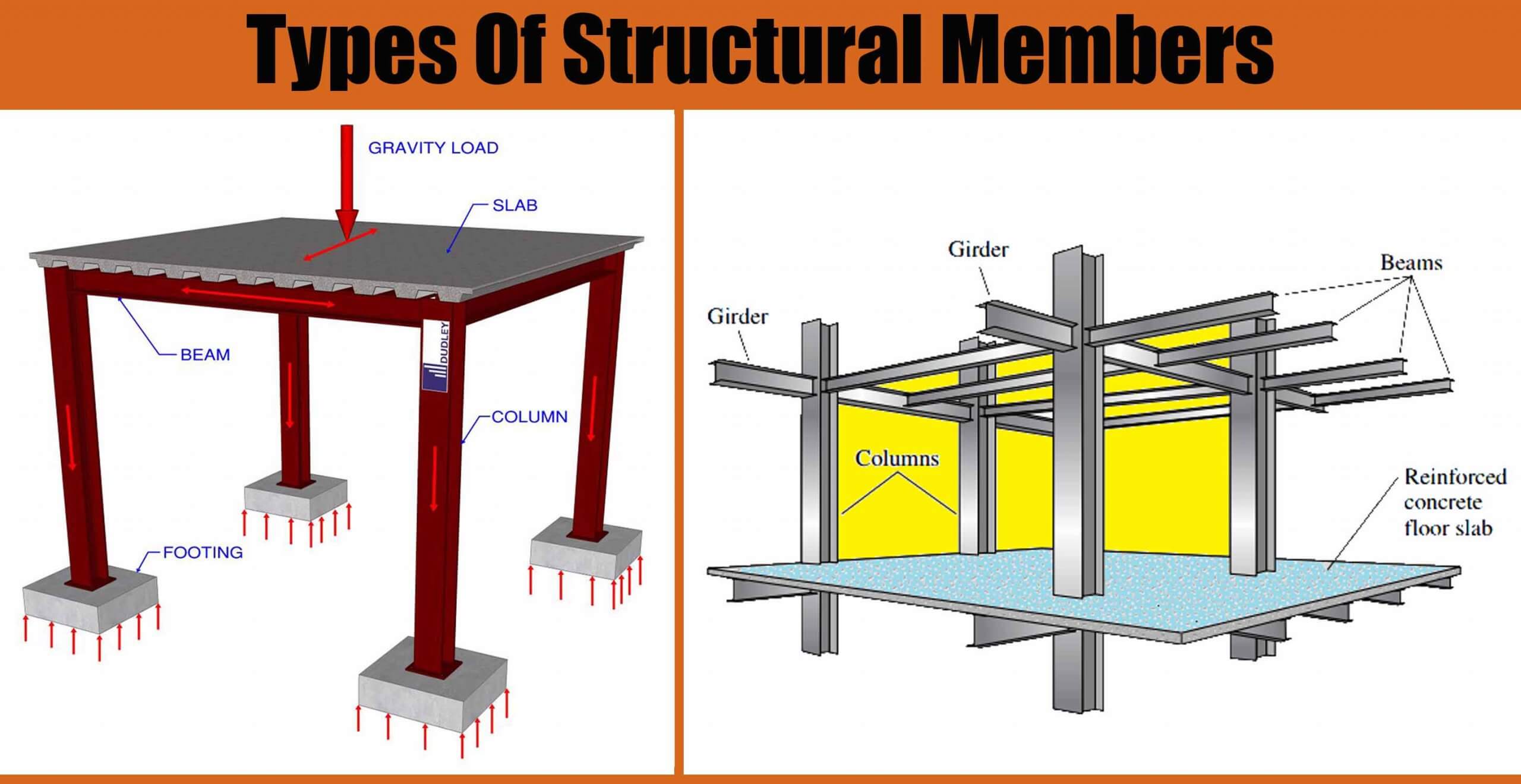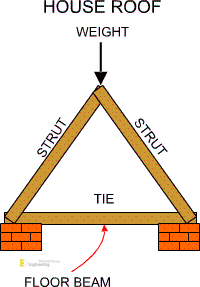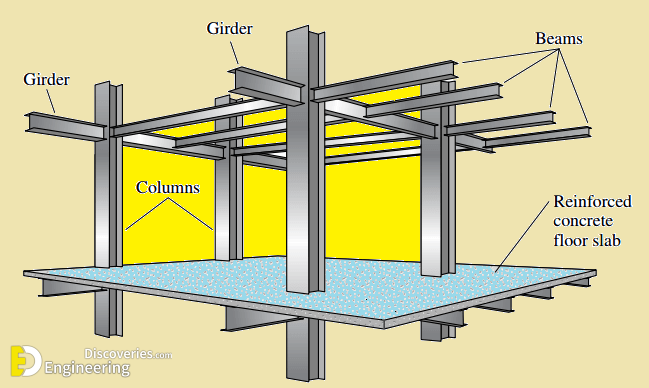A combination of members connected together in such a way to serve a useful purpose is called structure. Those members that are interconnected in such a way so as to constitute a structure are called structural members.
1- Beam
The beam is a flexure member of the structure. It is subjected to transverse loadings such as vertical loads, and gravity loads. These loads create shear and bending within the beam. Beams are horizontal structural members that are used to carry a load.
2- Columns
Columns: those members that are primarily subjected to axial compression forces. A column may be subjected to flexural forces also. Columns usually are thought of as being vertical members, but they may also be inclined.
3- Bracing
Brace – a structural member used to stiffen a framework
4- Strut
A compressive member of a structure is called strut. A strut is a structural member that is being pushed from opposite ends. It is said that a strut “resists compression.”
5- Ties
those members that are subjected to axial tension forces only. The load is applied to ties only at the ends. Ties cannot resist flexural forces
6- Beam-Column
A structural member subjected to compression as well as flexure is called beam column
7- Grid
A network of beam intersecting each other at right angles and subjected to vertical loads is called grid.
8- Cables and Arches
Cables are usually suspended at their ends and are allowed to sag. The forces are then pure tension and are directed along the axis of the cable. Arches are similar to cables except for hath they are inverted. They carry compressive loads that are directed along the axis of the arch.
9- Plates and Slabs
Plates are three dimensional flat structural components usually made of metal that are often found in floors and roofs of structures. Slabs are similar to plates except that they are usually made of concrete.





